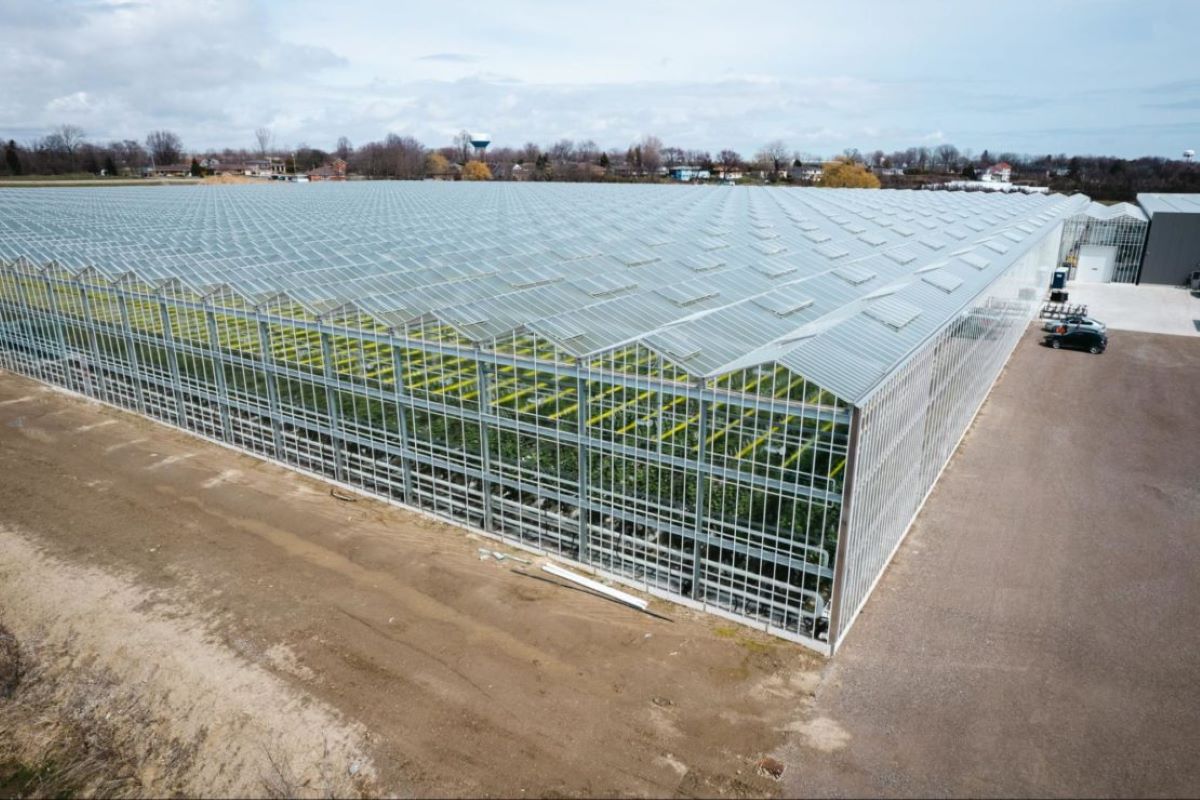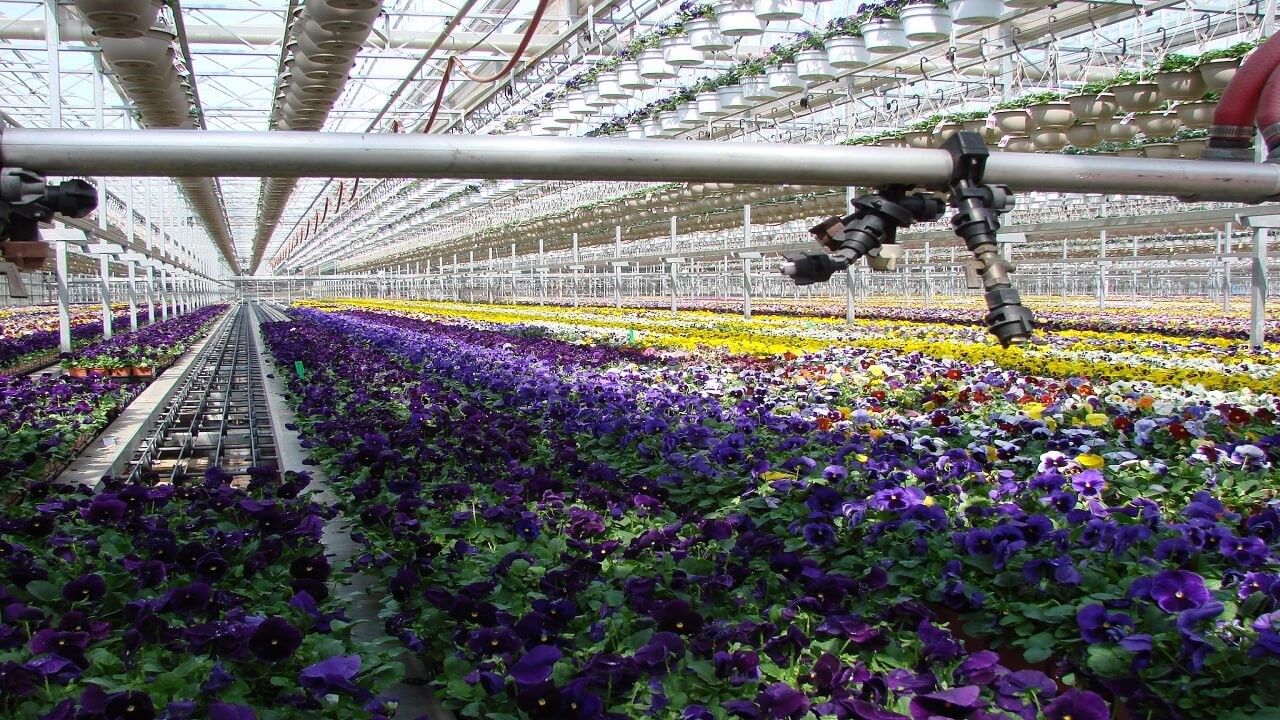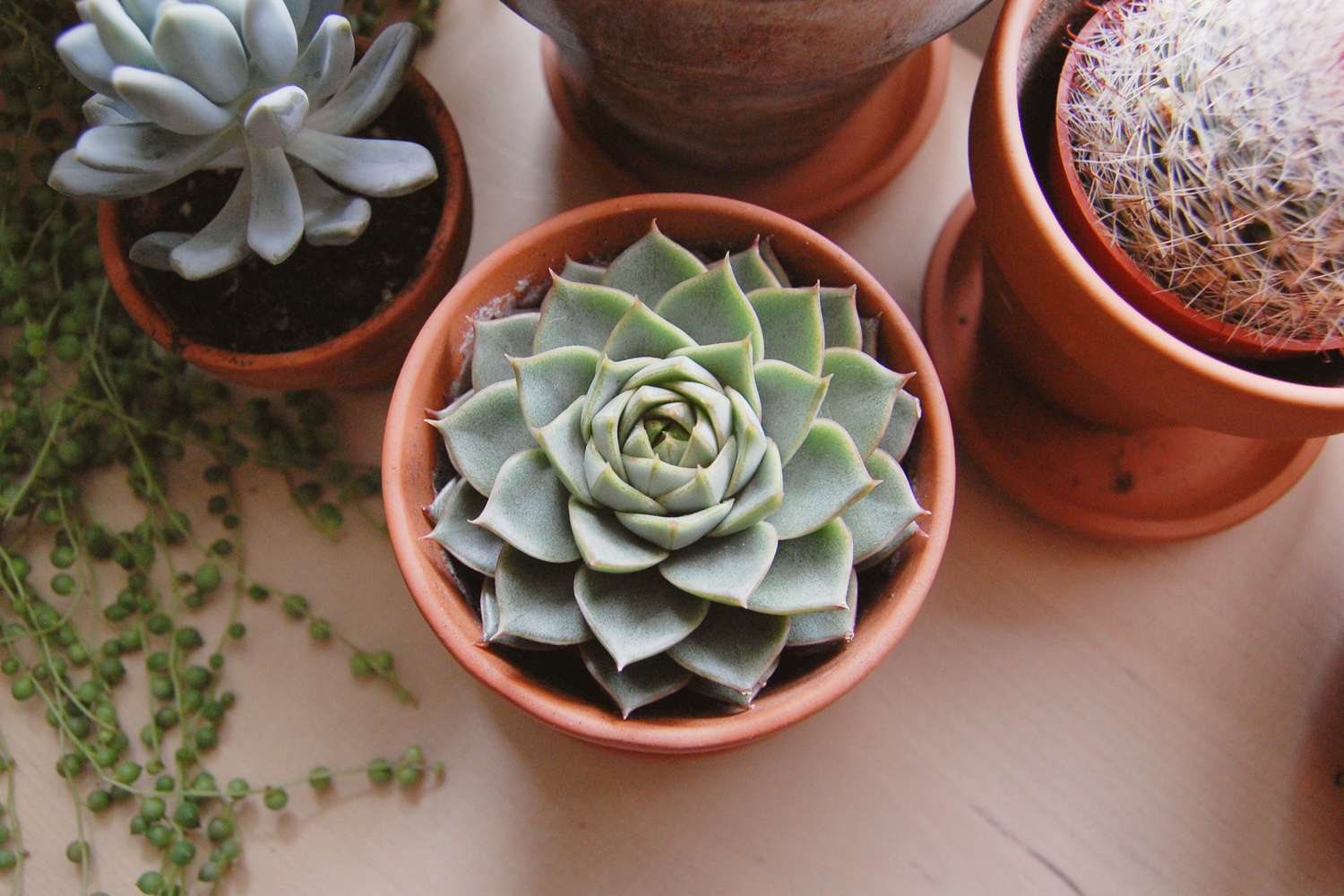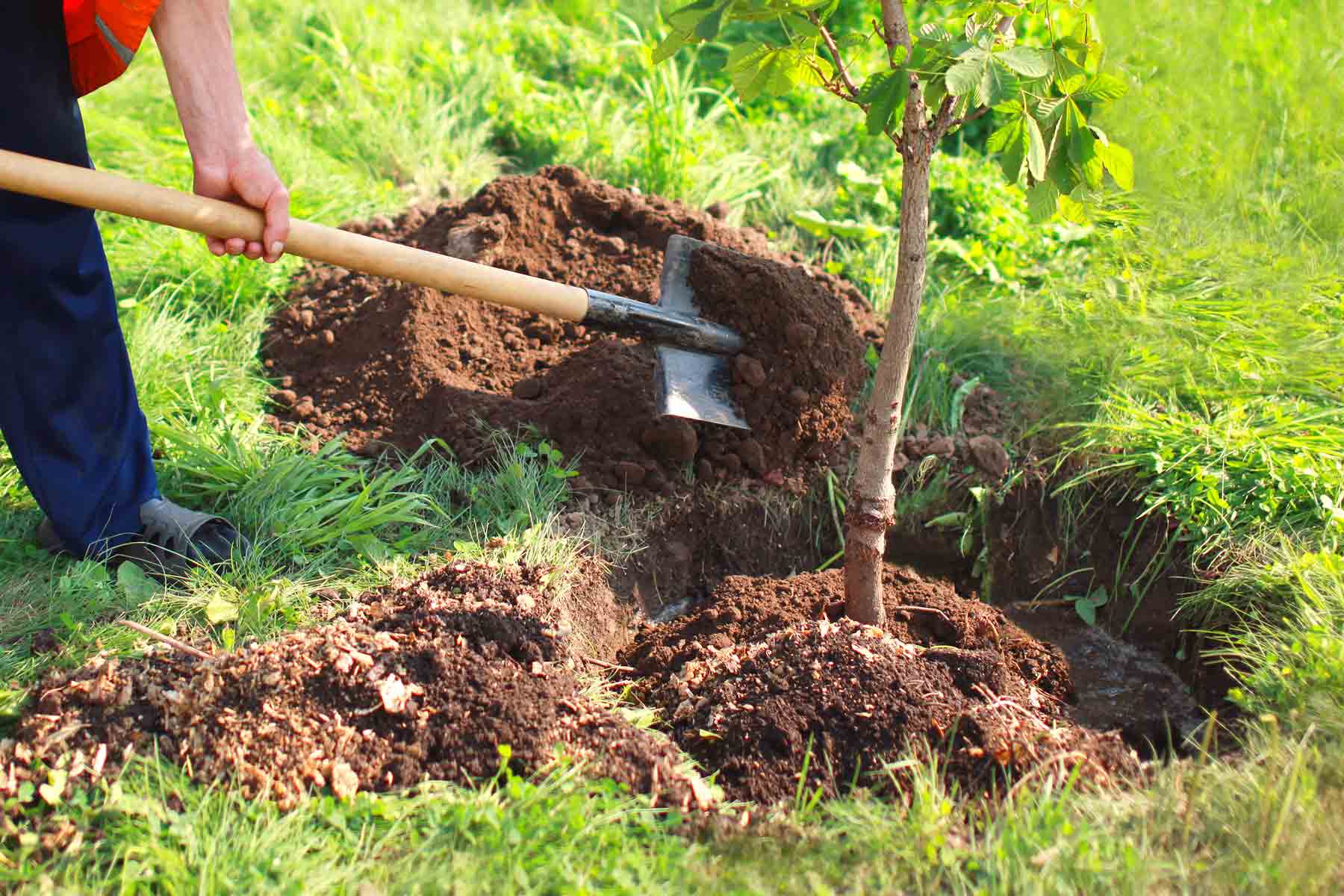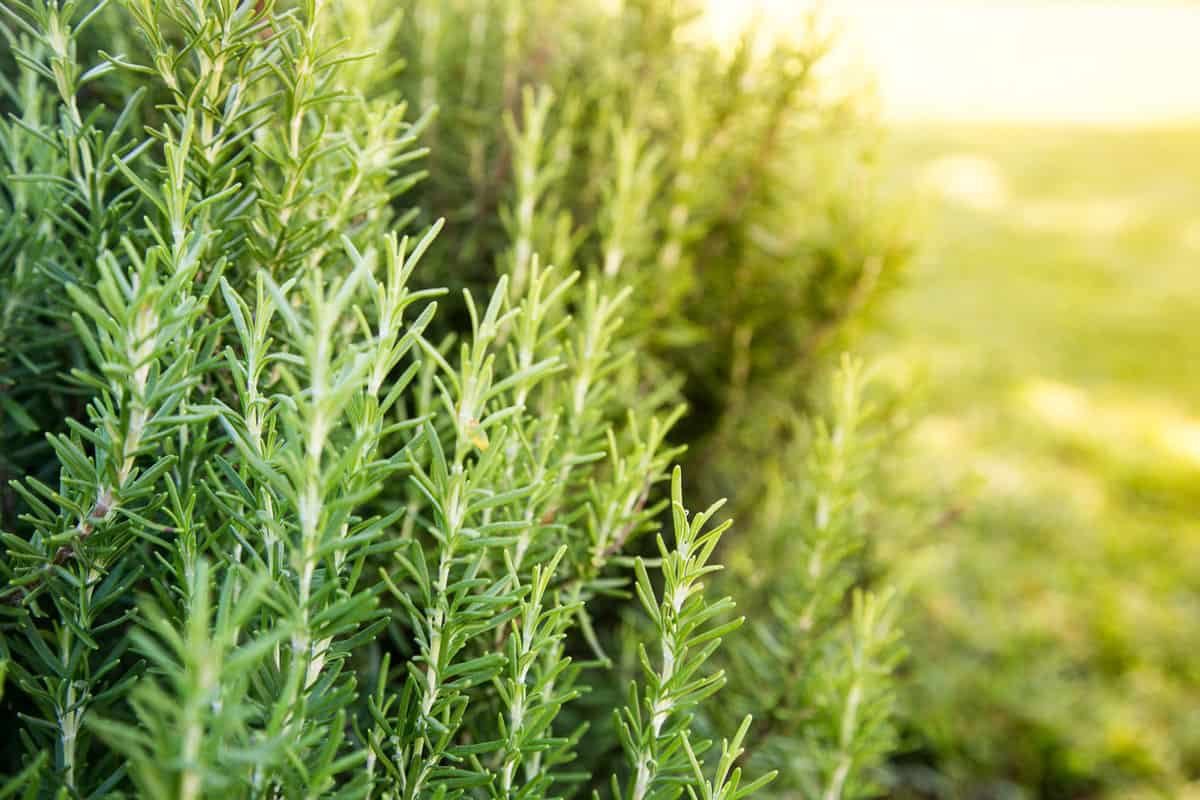Home>Gardening Tips and Tricks>Eco-Friendly Gardening>How Much Warmer Does A Greenhouse Get
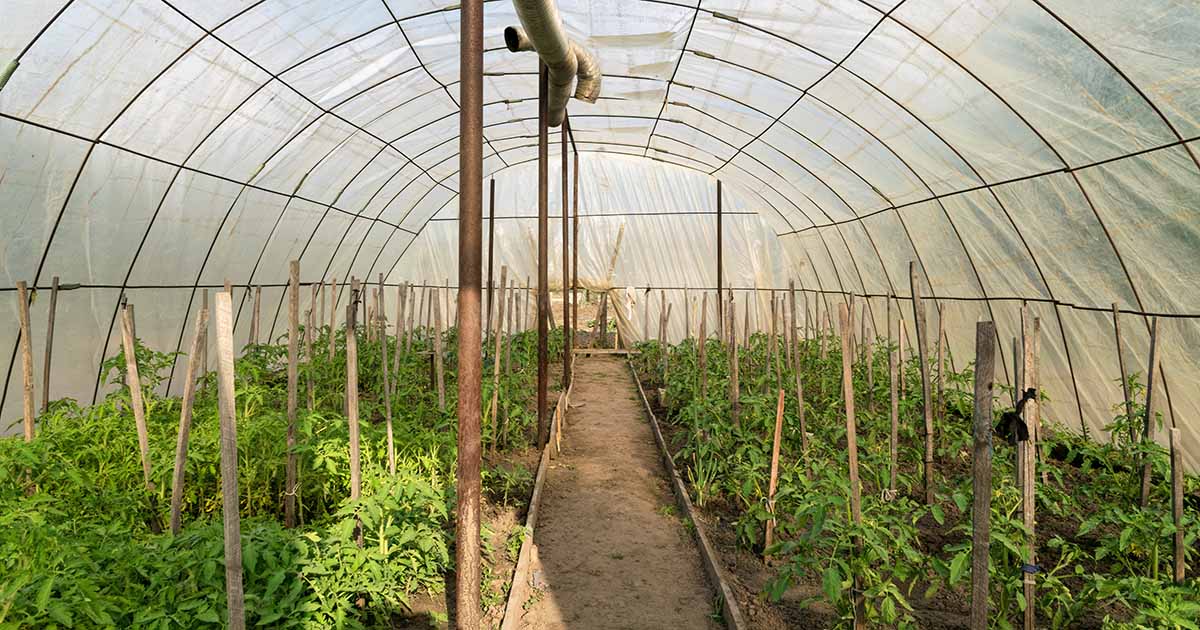

Eco-Friendly Gardening
How Much Warmer Does A Greenhouse Get
Modified: January 22, 2024
Learn how eco-friendly gardening can lead to warmer temperatures in your greenhouse and maximize your plant growth. Find out just how much warmer it can get!
(Many of the links in this article redirect to a specific reviewed product. Your purchase of these products through affiliate links helps to generate commission for Chicagolandgardening.com, at no extra cost. Learn more)
Table of Contents
Introduction
Welcome to the fascinating world of eco-friendly gardening! As our planet faces the challenges of climate change and environmental degradation, it becomes increasingly important to adopt sustainable practices in every aspect of our lives, including gardening. One of the key ways to achieve this is through the use of greenhouses.
A greenhouse is a structure that is specially designed for the cultivation of plants in a controlled environment. It provides an ideal space for plants to grow by harnessing the power of sunlight while creating a protective shield against harsh weather conditions.
With a greenhouse, gardeners have the ability to extend their growing seasons, protect delicate plants, and create optimal growing conditions for a wide variety of crops. But how much warmer does a greenhouse actually get, and what factors influence the temperature inside?
In this comprehensive guide, we will delve into the world of greenhouse gardening and explore the various factors that affect temperature inside a greenhouse. We will uncover the concept of the greenhouse effect and its role in temperature rise. Additionally, we will explore the variations in greenhouse temperature and how different design elements can influence this increase.
Whether you are a hobbyist gardener or a seasoned pro, understanding the intricacies of greenhouse temperature is essential for successful and sustainable eco-friendly gardening. So, let’s embark on this journey together and discover the fascinating realm of greenhouse temperature control!
Definition of a Greenhouse
A greenhouse is a structure that is specifically designed to create and maintain an optimal environment for plant growth. It is constructed with transparent or translucent materials such as glass or plastic, which allow sunlight to enter while trapping heat inside. This effect, known as the greenhouse effect, leads to elevated temperatures within the greenhouse, creating a warm and controlled environment for plants.
The primary purpose of a greenhouse is to protect plants from extreme weather conditions, including cold temperatures, strong winds, heavy rainfall, and snow. By providing a shield against these external factors, a greenhouse enables gardeners to extend the growing season and cultivate plants that would otherwise be susceptible to damage or death in harsh conditions.
A greenhouse offers several advantages over traditional outdoor gardening. Firstly, it serves as a barrier against pests and diseases, reducing the need for harmful pesticides. Secondly, it allows gardeners to have greater control over factors such as temperature, humidity, and ventilation, resulting in improved plant health and more successful crop yields.
There are various types of greenhouses, ranging from small backyard structures to large commercial operations. The design and size of a greenhouse can vary depending on the specific needs and preferences of the gardener. Some common types include hoop houses, lean-to greenhouses, and freestanding structures.
In recent years, there has been a growing trend towards eco-friendly and sustainable gardening practices. As a result, many greenhouses now incorporate environmentally friendly features such as rainwater collection systems, solar-powered ventilation, and the use of organic fertilizers and pest control methods.
Overall, a greenhouse provides a controlled and protected environment for plants to thrive, enabling gardeners to grow a wide range of crops throughout the year. By harnessing the power of sunlight and carefully managing the internal conditions, greenhouse gardening offers a sustainable and efficient way to cultivate plants in an eco-friendly manner.
Factors Affecting the Temperature Inside a Greenhouse
Several factors play a crucial role in determining the temperature inside a greenhouse. Understanding these factors is essential for maintaining optimal growing conditions and ensuring the success of your plants. Let’s explore the key factors that influence greenhouse temperature:
- Sunlight: The amount of sunlight the greenhouse receives directly affects its temperature. Sunlight provides heat energy, which can raise the temperature inside the greenhouse. The angle and intensity of sunlight vary throughout the day and year, so it’s important to consider these factors when positioning your greenhouse and choosing the appropriate shading or insulation materials.
- Insulation: The insulation of a greenhouse is crucial for retaining heat. Proper insulation helps to prevent heat loss during cold weather and minimize temperature fluctuations. Insulation materials, such as double-glazed polycarbonate panels or bubble wrap, create a barrier that reduces heat transfer to the outside environment, keeping the greenhouse warmer.
- Ventilation: Proper ventilation is crucial for regulating the temperature inside a greenhouse. Ventilation allows excess heat to escape and fresh air to circulate, preventing overheating. Windows, vents, or fans can all be used to facilitate ventilation and maintain a balanced temperature.
- Shading: Too much direct sunlight can lead to excessive heat buildup in the greenhouse. Using shading materials like shade cloths or applying shading paint to the exterior surfaces of the greenhouse can help to filter and diffuse sunlight, reducing the overall temperature inside.
- Humidity: The level of humidity inside a greenhouse can affect its temperature. High humidity can make the air feel warmer, while low humidity can result in cooler conditions. Maintaining optimal humidity levels through proper watering and ventilation practices is important for creating a comfortable and conducive environment for plant growth.
- Thermal mass: The thermal mass within a greenhouse refers to the materials or objects that absorb and store heat, such as water barrels or rocks. These materials can help regulate temperature by absorbing excess heat during the day and releasing it at night, providing a more stable and consistent environment for your plants.
By understanding and managing these factors, you can create a favorable and controlled environment inside your greenhouse, allowing your plants to thrive and grow to their fullest potential.
Greenhouse Effect and Temperature Rise
The greenhouse effect is a natural process that occurs in a greenhouse, which is also replicated in the Earth’s atmosphere. It is responsible for raising the temperature inside a greenhouse and, on a larger scale, contributes to global warming. Understanding the greenhouse effect is crucial for comprehending the temperature increase inside a greenhouse.
The greenhouse effect is primarily driven by the interaction between sunlight, greenhouse gases, and the physical properties of the materials used in constructing the greenhouse. When sunlight enters the greenhouse, it warms the surfaces, such as plants, soil, and structures, inside the greenhouse. These warm surfaces emit thermal radiation in the form of infrared (IR) rays.
However, unlike visible light, the greenhouse gases present in the greenhouse, such as carbon dioxide (CO2), methane (CH4), and water vapor, are relatively opaque to infrared radiation. This means that while visible light can easily enter the greenhouse, much of the IR radiation emitted from the warm surfaces becomes trapped inside the greenhouse.
The trapped infrared radiation causes a buildup of heat, leading to an increase in temperature inside the greenhouse. This phenomenon is similar to how the Earth’s atmosphere interacts with sunlight – greenhouse gases allow sunlight to pass through but trap the resulting heat, resulting in a warming effect.
It’s important to note that the increase in greenhouse gases in the Earth’s atmosphere due to human activities, particularly the burning of fossil fuels, has amplified the greenhouse effect and contributed to global warming. This has led to significant changes in the Earth’s climate and ecosystem.
In a greenhouse setting, controlling the greenhouse effect is critical for maintaining optimal temperatures. Careful consideration of greenhouse design, insulation, ventilation, and shading can help manage the amount of heat trapped inside the greenhouse and prevent temperature extremes that could be detrimental to plant health.
By understanding the greenhouse effect and implementing effective temperature control measures, greenhouse gardeners can create a favorable environment for their plants while minimizing energy consumption and promoting sustainable gardening practices.
Greenhouse Temperature Variations
The temperature inside a greenhouse can vary significantly throughout the day and throughout the year. Understanding these temperature variations is crucial for gardeners to effectively manage and optimize growing conditions for their plants.
During the daytime, when the sun is at its peak, the temperature inside a greenhouse can rise rapidly. This is primarily due to the greenhouse effect, where sunlight passes through the transparent or translucent materials and warms the surfaces inside the structure. The heat is then trapped by the greenhouse effect, leading to elevated temperatures. It’s not uncommon for the temperature inside a greenhouse to be significantly higher than the outside temperature during the day.
However, once the sun sets or during periods of limited sunlight, the temperature inside the greenhouse often drops. Without the direct heat from the sun, the heat stored within the greenhouse dissipates, causing a gradual decrease in temperature. This can be particularly challenging during colder months or in regions with substantial temperature differences between day and night.
Seasonal variations also affect greenhouse temperatures. In the summertime, the sun’s angle is higher, resulting in more direct and intense sunlight. This can lead to higher temperatures inside the greenhouse. Conversely, during winter, the sun’s angle is lower, and there is less sunlight available. As a result, greenhouse temperatures can be significantly cooler, requiring additional heating methods or insulation to maintain optimal growing conditions.
Factors such as location, weather patterns, and the design of the greenhouse can also contribute to temperature variations. For instance, greenhouses situated in hotter regions may experience more significant temperature increases, necessitating additional strategies to manage heat. Similarly, the presence of shade trees or nearby structures can provide natural shading and impact temperature fluctuations within the greenhouse.
Gardeners can employ various strategies to mitigate temperature variations inside the greenhouse. These include proper insulation to retain heat during cooler periods, ventilation systems to release excess heat during warmer periods, and shading techniques to reduce the impact of direct sunlight. Additionally, monitoring devices such as thermometers and automated climate control systems can help maintain stable and optimal temperatures throughout the day and year.
By carefully understanding and managing greenhouse temperature variations, gardeners can create a more controlled and stable environment for their plants, enabling healthy growth and maximizing productivity throughout the changing seasons.
Influence of Greenhouse Design on Temperature Increase
The design of a greenhouse plays a significant role in determining the degree of temperature increase within the structure. Various design elements can either enhance or mitigate the greenhouse effect, affecting the temperature inside. Understanding these influences is crucial for creating an optimal and efficient growing environment for plants.
One of the key design factors that influence temperature increase is the choice of materials for the greenhouse walls and roof. Materials such as glass or polycarbonate allow a higher percentage of sunlight to enter the greenhouse, resulting in greater amounts of heat being trapped inside. On the other hand, using materials that are more opaque to sunlight can help reduce the intensity of the greenhouse effect and mitigate temperature increases.
Another crucial aspect is the shape and orientation of the greenhouse. A greenhouse with a steep roof angle, such as a quonset or gothic shape, allows for better heat retention and less heat loss compared to a flat-roofed structure. Additionally, orienting the greenhouse in the proper direction can optimize sunlight exposure, maximizing heat gain during colder seasons.
Ventilation is another significant factor in greenhouse design that affects temperature increase. Adequate ventilation helps to release excess heat and maintain a balanced temperature. Properly positioned vents, louvers, or fans can facilitate air circulation, preventing overheating and promoting a more comfortable growing environment.
The size of the greenhouse also impacts temperature increase. A larger greenhouse tends to have a greater volume of air, which can slow down temperature fluctuations. However, it can also require more heating or cooling mechanisms to maintain the desired temperature range, especially in extreme weather conditions.
Additional design elements that can influence temperature increase include thermal mass and shading. Incorporating materials with high thermal mass, such as water containers or rocks, can help regulate temperature by absorbing and releasing heat, creating a more stable environment. Shading techniques, such as installing shade cloth or using external shading devices, can reduce direct sunlight exposure and mitigate excessive temperature rise.
Lastly, the insulation of the greenhouse has a significant impact on temperature control. Properly insulating the structure, including walls, roof, and foundation, can reduce heat loss and maintain a more consistent temperature inside. Insulation materials, such as double-layered glazing or polyethylene bubbles, create a barrier that minimizes heat transfer, ensuring more stable growing conditions.
By considering and optimizing these design factors, greenhouse owners can effectively manage the temperature increase within the structure. This allows for better control, improved plant health, and enhanced energy efficiency in greenhouse gardening.
Conclusion
As we conclude our exploration into the influence of various factors on greenhouse temperature, we have gained valuable insights into the world of eco-friendly gardening. Greenhouses provide a controlled environment for plants to thrive, extending the growing season and offering protection from harsh weather conditions.
Throughout this guide, we have discussed the definition of a greenhouse, the factors affecting temperature inside, the greenhouse effect, temperature variations, and the influence of greenhouse design on temperature increase. Understanding these factors is essential for gardeners to create optimal conditions for their plants and promote sustainable gardening practices.
We have learned that sunlight, insulation, ventilation, shading, humidity, and thermal mass all contribute to the temperature inside a greenhouse. These factors need to be carefully managed and balanced to ensure a comfortable and conducive environment for plant growth.
The greenhouse effect, similar to its impact on the Earth’s atmosphere, plays a crucial role in temperature rise inside a greenhouse. Trapped heat from sunlight causes an increase in temperature, which can be managed through proper design, insulation, ventilation, and shading techniques.
We have also explored the variations in greenhouse temperature, understanding the impact of daily sunlight cycles and seasonal changes. By considering factors like location, weather patterns, and the design of the greenhouse, gardeners can mitigate temperature fluctuations and provide a more stable environment for their plants.
Lastly, we have seen how greenhouse design elements such as materials, shape, orientation, ventilation, size, thermal mass, and insulation significantly affect temperature increase. By optimizing these design elements, gardeners can create a more efficient and effective growing environment.
In conclusion, eco-friendly gardening in a greenhouse is not only a rewarding and sustainable practice but also an opportunity to explore the fascinating interplay between nature and human intervention. By harnessing the power of sunlight and carefully managing temperature, gardeners can cultivate a wide range of plants while minimizing their environmental impact.
As our planet faces environmental challenges, eco-friendly gardening practices, including greenhouse cultivation, become even more critical. By adopting sustainable approaches and incorporating greenhouses into our gardening routines, we can contribute to a healthier and greener future for ourselves and generations to come.

